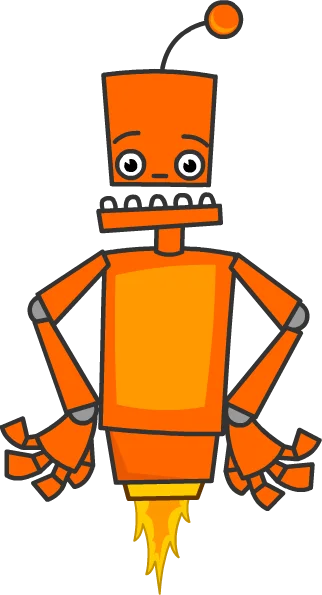Grades 7-12
Tips for using the site with students
- Before using this activity in class (or at home with your kids) go through the activity once to make sure it works correctly on your computer(s).
- Your computer(s) will need to have some sort of sound output. Either speakers or headphones will work well. The majority of this activity has voice audio. We highly recommend headphones in a classroom setting. Students with hearing impairments can read the text at the bottom of the screen. If you are having difficulty hearing, check the audio settings on your computer.
- We strongly recommend that students use a real mouse, as the touch pads on laptop computers are more difficult, but can be used.
- If the teacher would like students to fill out a worksheet while doing the activity, that can be printed here. The worksheet is NOT necessary to complete the activity, but is a way for students to show they have done the activity or for teachers to track student progress.
- Students in the target grade-range will take approximately twelve to fifteen minutes to complete surgery working individually or in groups of two to three. Some students can get queasy using this activity.
Answers to Questions Asked in the Activity
Q1. Do you think we should continue with surgery?
A1. Yes
Q2. Why don’t we just cut through the abdominal muscles from side to side instead of up and down?
A2. This would cause the patient more pain and take longer to heal.
Q3. Why do you think we clamp the iliac arteries first?
A3. To avoid embolisms, or blood clots, going down into the legs.
Q4. Why do we clamp the aorta below the renal arteries?
A4. To prevent kidney failure during or after surgery.
Q5. Why would we use permanent suture here instead of dissolvable suture?
A5. We can’t take the chance on dissolvable suture dissolving too soon.
Q6. Why would we close the aorta around the graft instead of just cutting away the diseased parts of the artery?
A6. The aorta wall, even though diseased, provides an extra layer of protection to prevent the bowel from rubbing on the graft.
Q7. Why use a permanent suture on the abdominal wall?
A7. Abdominal muscles are very strong and could potentially put a lot of pressure on the sutures that might dissolve too soon.
Q8. Why do we use staples instead of suture for the skin?
A8. Staples are more sturdy and easier to remove if an infection in the skin develops.
The worksheet for this activity is optional. Teachers may choose to have their students do the worksheet as a means of ascertaining that the students have completed the activity. However, the worksheet is NOT required to complete the activity.
You can download the worksheet here.
You can download answers to the worksheet here.
Assessment and Discussion
For an assessment tool, teachers may want to have students put their names on the Worksheets and turn them in. These should indicate if students completed the assigned activity.
A five question quiz can be found here.
Answers to the quiz questions can be found here.
After students use the site, additional in class discussion questions (which can also act as assessment tools) can be asked or assignments made:
- How do you think the surgeon knew to put the clamps at the bottom (near iliac arteries) of the aneurysm first, instead of at the top near the renal arteries? How do you think knowledge like that is gained? Answer: Somewhat through personal experience or through the personal experience of the surgeon that trained the one performing the operation. Primarily through published papers and continuing education seminars and conferences for medical personnel. This clearly illustrates the need for scientists to share their work and data sets.
- Students can research and, if desired, write a report on the history and advancement of the grafts used to repair aortic aneurysms.
- Students can design an experiment or process that would allow them to determine the answer to the question of why so many more men than women have aortic aneurysms (80% of patients are men). This would most likely involve something like the Framingham Study, referenced here: http://www.framinghamheartstudy.org/ or could also involve genetic studies or perhaps even the development of a test to determine which individuals might be more likely to develop aneurysms. Students can discuss their ideas in class or write a report to turn in to the teacher.
Ohio Science Standards
Science & Technology
Grades 6-8:
- Give examples of how technological advances, influenced by scientific knowledge, affect the quality of life.
- Design a solution or product taking into account needs and constraints (e.g., cost, time, trade-offs, properties of materials, safety and aesthetics).
Scientific Inquiry
Grades 6-8:
- Explain that there are differing sets of procedures for guiding scientific investigations and procedures are determined by the nature of the investigation, safety considerations and appropriate tools.
Scientific Ways of Knowing
Grades 11-12:
- Explain how ethical considerations shape scientific endeavors.
- Explain how societal issues and considerations affect the progress of science and technology.
National Science Standards
Content Standards
Grades 5-8:
- Understandings about scientific Inquiry.
- Understanding of structure and function in living systems, reproduction and heredity.
- Abilities of technological design and understandings about science and technology.
- Personal health risks and benefits, science and technology in society.
Grades 9-12:
- Understandings about scientific inquiry.
- Matter, energy and organization in living systems and behavior of organisms.
- Abilities of technological design, understandings about science and technology.
- Natural and human-induced hazards, science and technology in local, national, and global challenges.
- Understanding of the nature of scientific knowledge and science as a human endeavor.

